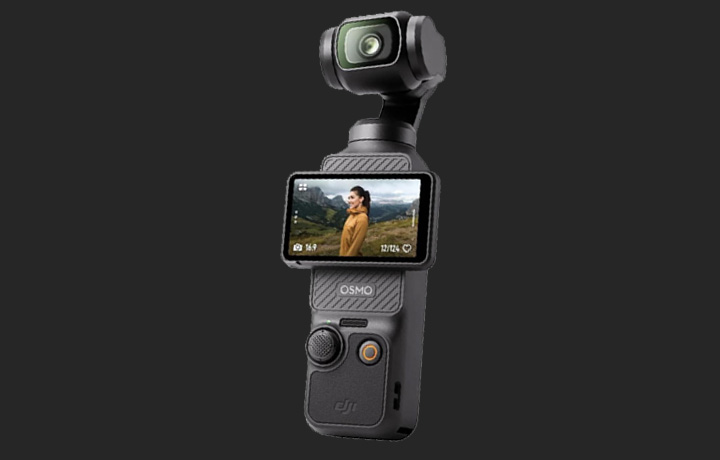DJI Osmo Pocket 3 Review: Plus All “Pros, Cons” And Reasons To Buy It
In smartphone gadgets and portable cameras, DJI has consistently pushed boundaries with their Osmo Pocket series. The latest addition, the DJI Osmo Pocket 3 Creator Combo, has generated considerable excitement among content creators and tech enthusiasts alike.
Having been intrigued by the product line for a while, the anticipation for a potential game-changer is palpable. In this comprehensive review, we’ll delve into the features, capabilities, and overall performance of the Osmo Pocket 3 Creator Combo.
- Read also:
- Sony PlayStation Portal Review: “Pros And Cons” And Reasons To Buy It
- Unihertz 8849 Tank 3 Review: A Heavyweight Rugged Smartphone with Unmatched Battery Power
Unboxing and Initial Impressions
The unboxing experience sets the tone for what’s to come. The camera arrives in a sleek, utilitarian soft case, exuding a sense of durability and practicality. Upon opening, the camera is revealed in all its compact glory, accompanied by a set of carefully arranged accessories.
The package includes a wide-angle lens, DJI Mike 2 transmitter, and a battery handle to enhance the device’s battery life. The thoughtful inclusion of these accessories, especially the wide-angle lens and the DJI Mike 2 transmitter, reflects a commitment to providing users with a comprehensive and versatile filmmaking tool.
Key Features and Specifications
The DJI Osmo Pocket 3 boasts a 1-inch CMOS sensor capable of recording in stunning 4K at 120 frames per second—a feature that immediately distinguishes it from most smartphones. The 2-inch rotatable screen on the front adds a layer of versatility, allowing seamless transitions between portrait and landscape modes with a motorized gimbal.
The 3-axis mechanical gimbal, equipped with Active Track 6.0, showcases the camera’s tracking capabilities, initiated through gestures. This feature enables smooth and precise tracking of subjects, making it an ideal companion for dynamic shooting scenarios. Full pixel fast focusing, D-log, and 10-bit recording provide the flexibility for detailed post-production color grading, elevating the quality of the final output.
One of the standout features is the integration of a stereo microphone, eliminating the need for an external receiver. This, coupled with the wireless microphone input, speaks to DJI’s commitment to streamlining the user experience and enhancing the device’s overall portability.
Design and Build Quality
The DJI Osmo Pocket 3‘s design exudes a sense of sophistication and functionality. The camera, housed in a water-resistant black material, feels robust and ready for the challenges of on-the-go filmmaking. The motorized gimbal, when in action, showcases a level of stability and smoothness that enhances the overall user experience.
The inclusion of a removable battery handle adds a layer of versatility. Whether opting for a more compact setup for casual shooting or attaching the handle for extended use, the design caters to a range of shooting preferences. The modular approach, including a Quin thread on the handle for tripod mounting, further enhances the camera’s adaptability to various shooting environments.
User Interface and Functionality
Navigating the Osmo Pocket 3’s interface is a breeze, thanks to the responsive touchscreen. The interface provides access to a variety of image and audio parameters, including exposure, white balance, and glamour effects. The inclusion of a joystick adds an extra layer of control, allowing users to pan and tilt effortlessly.
The 2-inch screen’s rotation, combined with the motorized gimbal, facilitates smooth transitions between portrait and landscape modes. This functionality proves invaluable for content creators who seek versatility without compromising on stability. The interface’s intuitiveness contributes to a user-friendly experience, making it accessible for both beginners and seasoned filmmakers.
Filmmaking in Action
Putting the DJI Osmo Pocket 3 to the test in real-world scenarios is where its true potential shines. The device’s wide-angle lens proves to be a valuable addition, allowing for versatile framing options. The 4K 60 frames per second recording capability ensures crisp and detailed footage, while the 1-inch sensor excels in low-light conditions, capturing clear and vibrant images even in challenging environments.
The motorized gimbal’s performance is commendable, delivering stable footage regardless of movement or environmental factors. The seamless transition between portrait and landscape modes adds a creative dimension to storytelling, giving creators the freedom to experiment with different perspectives on the fly.
The inclusion of ND filters further enhances the camera’s adaptability, enabling users to achieve a shallow depth of field in brightly lit environments. This flexibility in controlling the visual elements empowers filmmakers to elevate their storytelling and creative expression. Connectivity and integration, Pros and Cons, and reasons to buy it, all on the NEXT PAGE…










